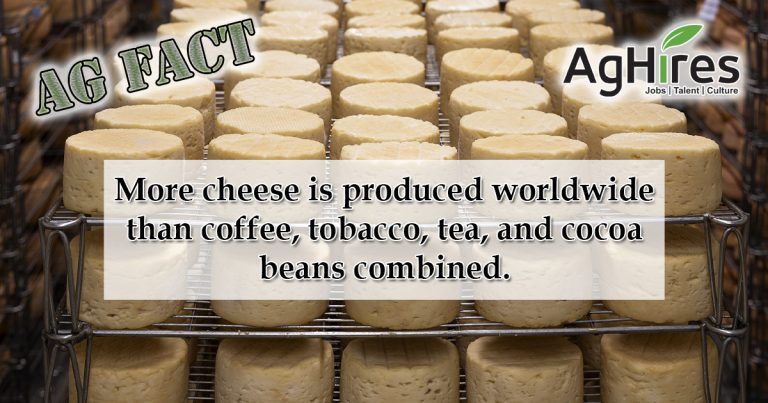
Cheese is one of the most popular foods around the world. It’s a versatile ingredient in many dishes and it’s even delicious on its own as a snack. Cheese is the resulting product of curdling milk and separating the liquid from the solid. We’ll learn more about how milk is made later.
History
Cheese has been around for over 7,000 years. Archaeologists found traces of cheesemaking in artifacts. It is believed the creamy product was accidentally discovered when these ancient people would carry milk in the stomach linings of animals. Animal stomachs contain a bacteria enzyme, rennet, which curdles milk. In early modern cheesemaking the bacteria enzyme was taken from the stomachs of young cows, but today this rennet is genetically engineered from bacteria and yeast.
Cheese Production
There are about 2,000 varieties in the world made from cow, goat, or sheep milk. The United States produces over 300 varieties, mostly from cow’s milk. More cheese is produced worldwide than coffee, tobacco, tea, and cocoa beans combined. The United States produces about 5.95 million metric tons each year, but they are second to the European Union, which produces about 10.28 million metric tons. Wisconsin is the biggest producer in the States, producing over 3.3 billion pounds of cheese each year. California follows with about 2.5 billion pounds. Idaho, New York, and New Mexico are other producing states.
Consumption
The average American consumes about 39 pounds of cheese each year. It might seem like a lot, but the French and Greeks consume much more. In France, the average person consumes about 53 pounds a year, while in Greece 72 pounds are consumed per person each year. That’s a lot of milk. It takes on average 10 pounds of milk to make 1 pound of cheese, but the ratio can change depending on the type of milk.
While Gouda accounts for about 50% to 60% of the world’s cheese consumption, cheddar and mozzarella are the top cheeses consumed in the United States. Lactose intolerant people can still enjoy cheese. Hard cheeses like parmesan and asiago are low in lactose, making them more manageable to those with an intolerance. Younger cheeses, such as ricotta, have more lactose.
Making Cheese
As mentioned previously, cheese is made by curdling milk and separating whey (the milk liquid) from the curd (milk solids). Milk is gently heated and a bacteria or enzyme such as rennet is added to cause the milk to curdle. Once the curd is firm, small pieces are cut to allow more whey to release. The smaller the pieces, the dryer the curd becomes making the cheese harder. Once the hardness is determined the curd will either be heated again or stacked to drain more whey. At this point, salt may be added before the curd is placed in molds. When in the molds, the product will be pressed to create an even texture. Then the cheese is left to age between 3 weeks to 15 months or more depending on the variety being produced.
More Facts:
- Most cheeses are made with just three ingredients: milk, salt, and a coagulant such as vinegar, rennet, or bacteria.
- Farmstead cheeses are cheeses that are made on the same farm where the animals that produce the milk are from.
- The subtle yellow color in butter and cheese comes from the beta-carotene in the grass cows eat.
- The holes in cheeses like swiss are the result of carbon dioxide made by bacteria in the cheese, forming little air pockets as it hardens.
Want more Agriculture Facts? Click here
Follow us on Facebook and Twitter to get your weekly dose of Ag Facts.
Sign Up for Our Email Newsletter and get ag facts bi-monthly, plus new jobs in agriculture.
Sources:
Popcorn for the People
Edgewood Creamery
Wisconsin Cheese






